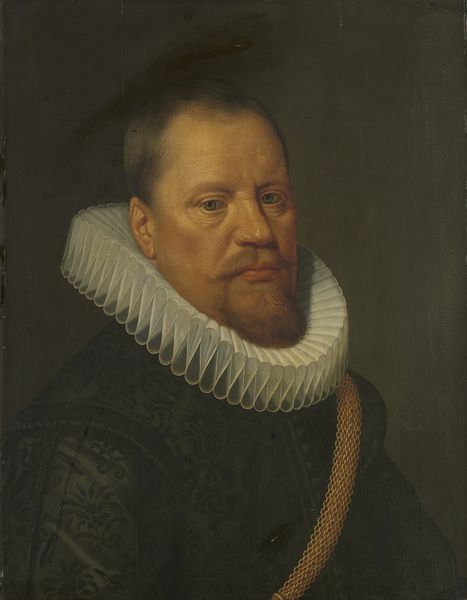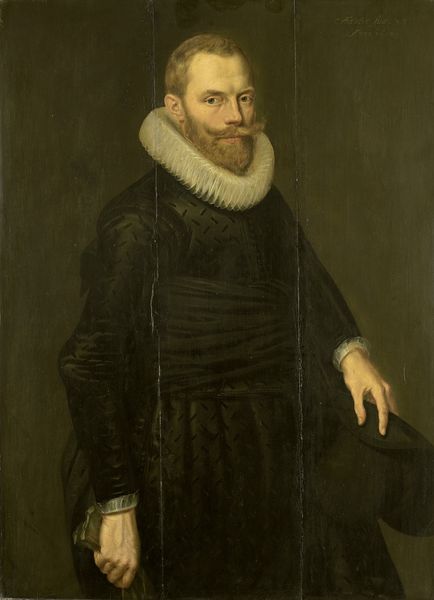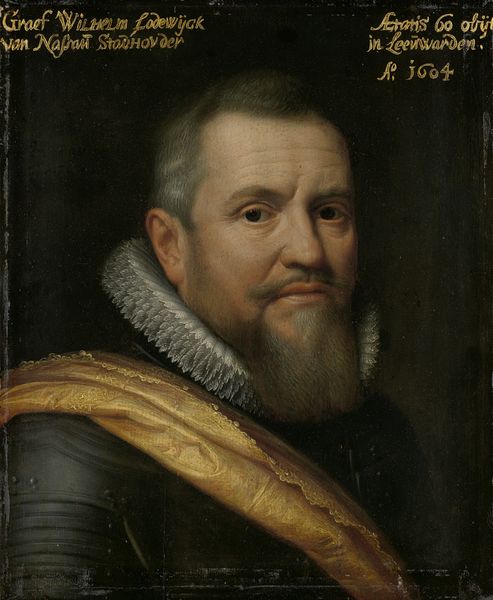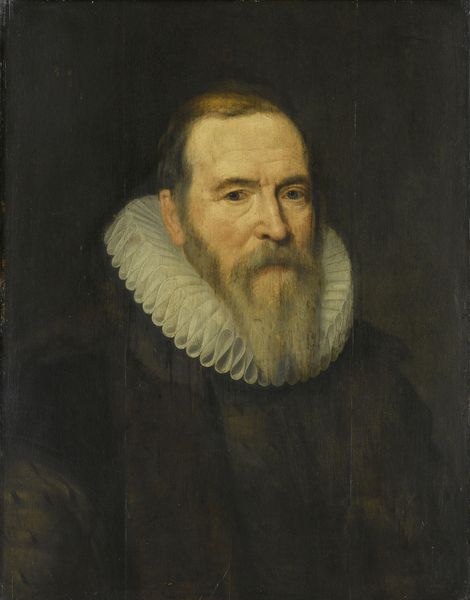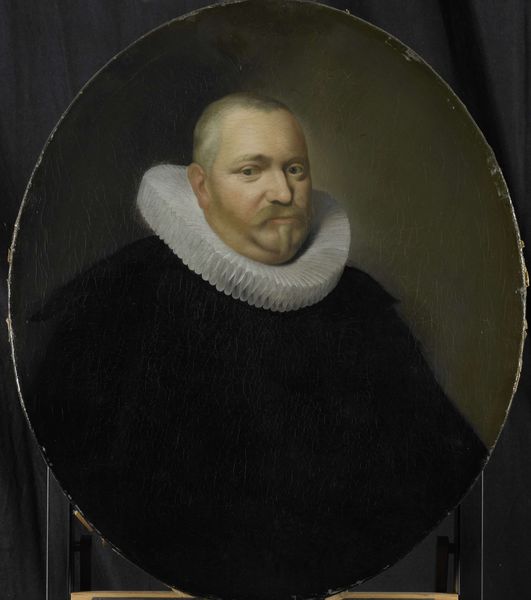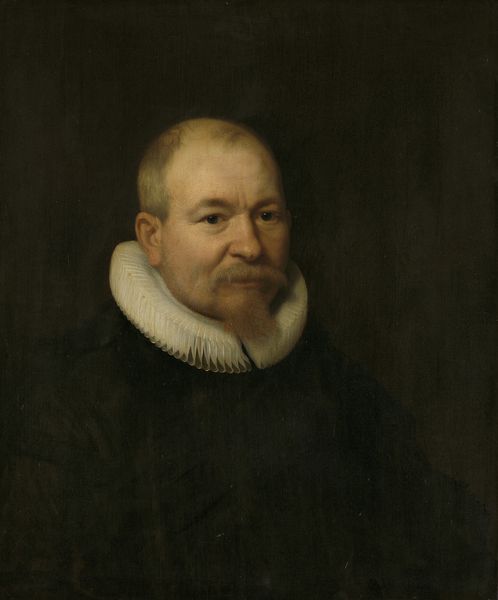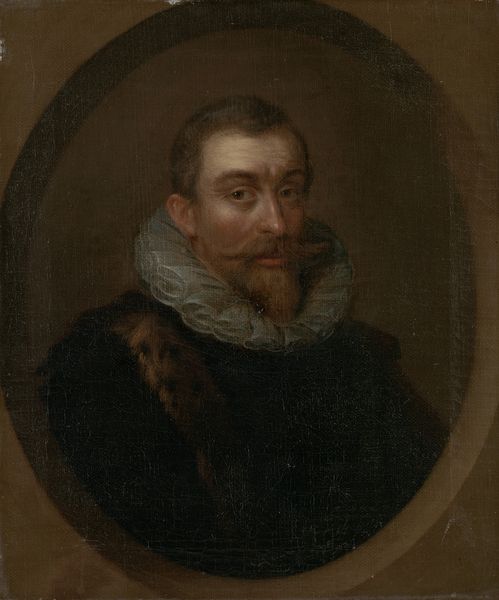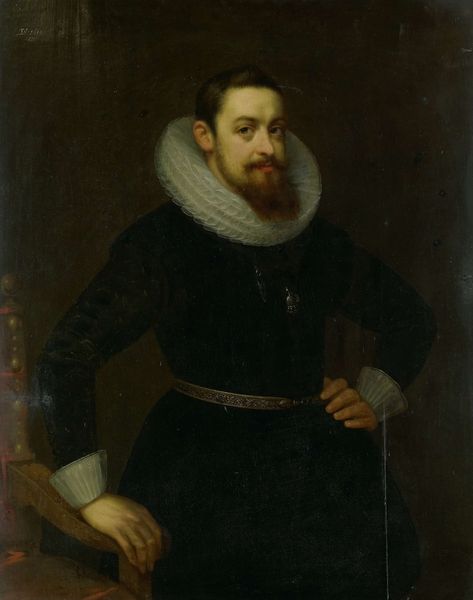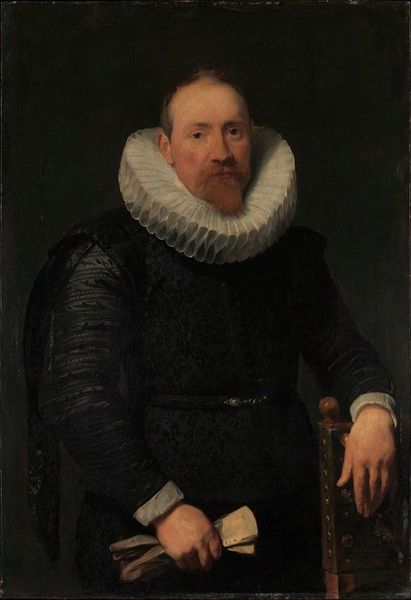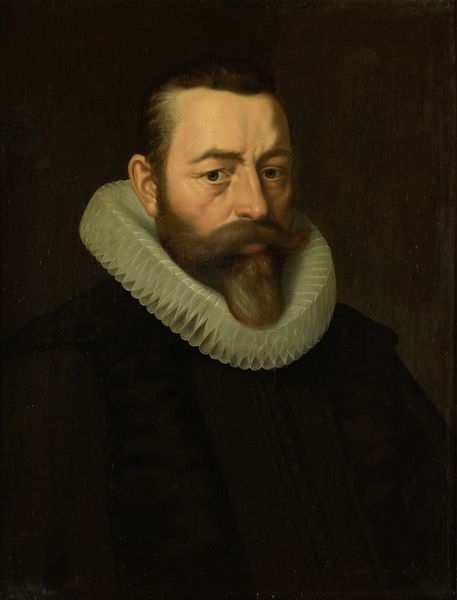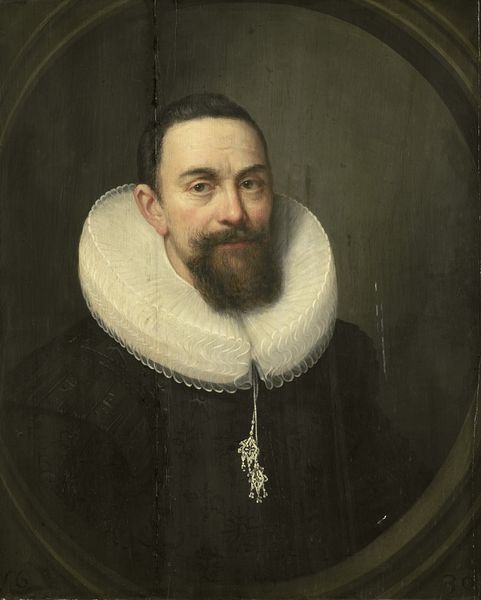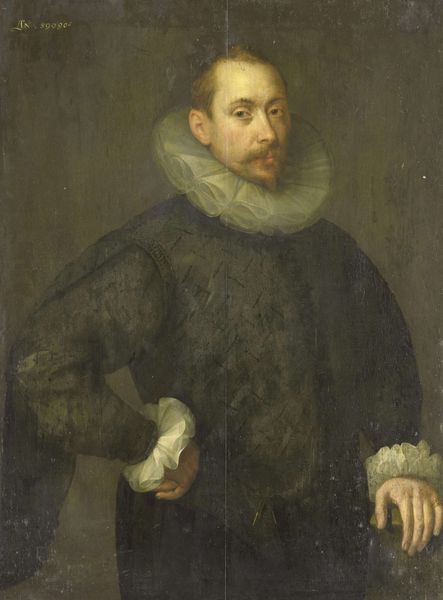
painting, oil-paint
#
portrait
#
baroque
#
dutch-golden-age
#
painting
#
oil-paint
#
history-painting
Dimensions: support height 63 cm, support width 49.6 cm, outer size depth 6.5 cm
Copyright: Rijks Museum: Open Domain
Editor: Here we have "Portrait of a Man, possibly Joris van Cats," an oil painting from around 1621 by an anonymous artist. He certainly looks the part of a Dutch Golden Age figure! I'm immediately drawn to his stern expression and elaborate ruff. What can you tell us about how society influenced paintings like this? Curator: That's a great observation. During the Dutch Golden Age, portraiture became a powerful tool for the burgeoning merchant class. These paintings weren't just about capturing likeness; they were about projecting status, respectability, and civic virtue. Notice the somber colors and the careful attention to detail in the ruff, a symbol of wealth and refinement. The question, though, is: whose values were truly being reflected here? Editor: So, this is less about the individual and more about conveying a societal expectation? Is it also about self-promotion? Curator: Precisely. Think of these portraits as carefully constructed PR. The sitter controls the narrative through clothing, pose, and even the inclusion of symbolic objects. The two crests at the top corners are examples. And let's consider where these images would have been displayed – in homes, council chambers, spaces meant to impress upon visitors a family's or individual’s power. Do you think that affects our reading of the portrait today? Editor: Absolutely. Seeing it in a museum gives it a different kind of weight, a historical distance. I never thought about portraits as PR before. That perspective really changes things for me. Curator: Indeed. By examining the social function of these paintings, we gain insight not only into the lives of the portrayed, but into the values and power structures of the era itself. A mirror to their aspirations and self-image. Editor: I will think twice about portraiture next time. Thanks!
Comments
No comments
Be the first to comment and join the conversation on the ultimate creative platform.
